In a city like Amritsar, where tradition and modern life blend seamlessly, people take pride in living with strength, purpose, and self-reliance. Whether it’s preparing langar at the Golden Temple, managing a local shop, riding a bike to work, or caring for family, hands are central to how people live and express themselves.
But for those who’ve lost a hand—whether through injury, illness, or since birth—these daily actions can become frustrating challenges. The ability to grip, carry, cook, write, or work is suddenly taken away. And that loss isn’t just physical—it’s emotional. It affects identity, confidence, and one’s role in the family and community.
At Robobionics, we understand what this means. That’s why we’ve made it our mission to create not just prosthetic hands—but bionic hands that are simple to use, strong enough for real life, and tailored to each person’s needs. We’ve helped hundreds of people across India regain control of their lives, and now we’re focused on helping individuals in Amritsar move forward with dignity, independence, and new possibilities.
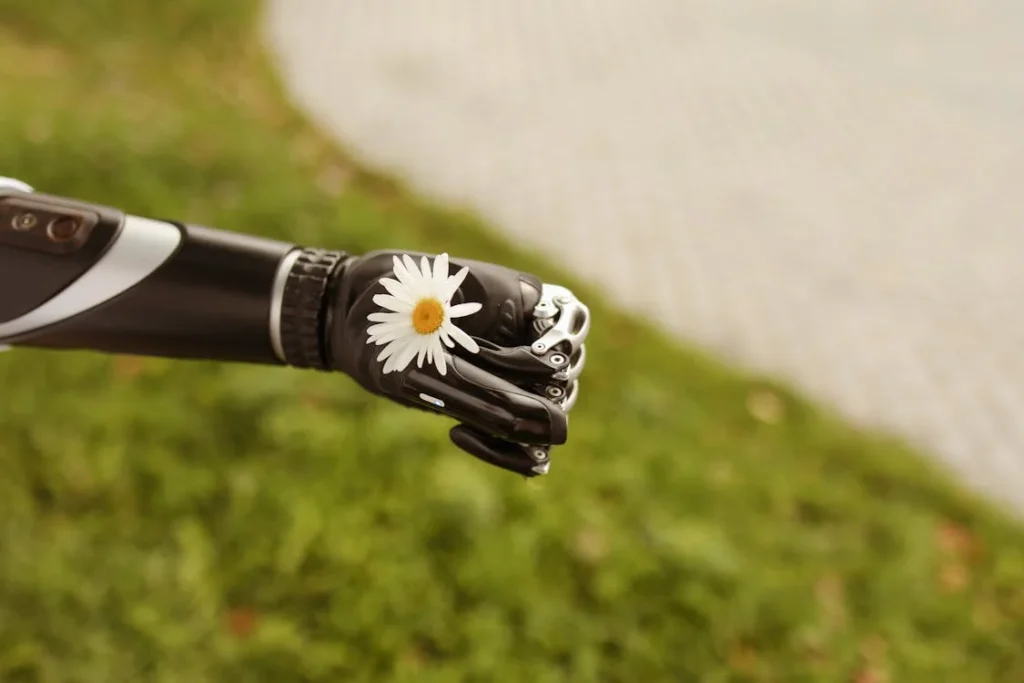
Why Amritsar Needs Advanced Yet Practical Prosthetic Solutions
Life in Amritsar Is Active, Demanding, and Deeply Connected to Daily Routine
In Amritsar, life flows with energy. The streets are always busy, families are close-knit, and work is never done. Whether you’re a farmer just outside the city, a shop owner in Hall Bazaar, or a homemaker preparing langar for a nearby gurudwara, your hands are always engaged in some way.
That’s what makes the loss of a hand so disruptive—it affects your ability to take part in life the way you used to. Even small tasks like tying a turban, preparing tea, or opening a water tap can suddenly feel impossible.
For many, this change doesn’t just hurt their routine—it deeply affects how they see themselves. We’ve spoken to individuals in Amritsar who said they started avoiding social gatherings, religious events, or even visiting the market because they didn’t want to answer questions or deal with stares.
The loss of a limb becomes something they carry emotionally just as much as physically.
That’s why Robobionics approaches prosthetics with one clear goal: make people feel whole again. We don’t just restore function—we help restore freedom, dignity, and the sense of being seen as capable.
The Problem with Traditional Prosthetics in Everyday Life
Many people in Amritsar have used basic prosthetic hands in the past. These were either cosmetic hands that looked real but did nothing, or rigid hooks that could open and close with limited movement.
While they may have provided some visual relief, they often fell short in daily function. They couldn’t hold utensils properly. They didn’t help with dressing. They felt unnatural, heavy, or simply awkward.
For most users, these devices ended up gathering dust in a drawer.
We’ve met many such users—people who once tried to stay hopeful but were left disappointed by outdated technology.
Their main complaint wasn’t that the device didn’t work—it was that it didn’t work for them. It didn’t fit into their way of life. It didn’t make their days easier. And it didn’t feel like a part of them.
That’s where Robobionics steps in—not with a generic solution, but with a new way forward.
How Our Bionic Hand is Changing Lives
At Robobionics, our bionic hand does more than just open and close. It responds to your thoughts through signals in your muscles. If you think about closing your hand, it does. If you want to grip something, it knows how tightly to hold.
You’re not operating it with buttons—it’s working with your intent. That’s what makes it feel natural.
We designed it not just in labs, but with real people in mind. We watched how people in cities like Amritsar move, work, and interact. We built a hand that helps them grip a steel tumbler, hold a spoon, roll out dough, or shake someone’s hand with confidence.
One of our users in Amritsar, a middle-aged man who worked in logistics, told us the bionic hand gave him back his speed. He could lift packages, handle customer paperwork, and even ride his bike again.
He said it didn’t just help him do his job—it helped him keep his job. That’s what real technology should do.
Another woman, a mother of two, told us she was able to pick up her younger child with her bionic hand after months of avoiding the task. She cried—not because it was hard, but because it felt easy again. These are the moments that remind us why we do what we do.
Designed for Real Indian Conditions
Amritsar has extreme temperatures—hot summers, chilly winters, dusty winds. Our bionic hand is built to withstand all of that. It’s sweat-resistant, easy to clean, and designed for long hours of use.
The grip is strong but gentle, so you can hold something without crushing it. The battery lasts all day with regular use, and it recharges just like a phone.
We’ve worked hard to make sure the materials don’t irritate the skin, even after hours of wear. The socket—the part that connects the device to your arm—is custom-made for each person.
It fits snugly but comfortably. You won’t feel like you’re wearing a foreign object. You’ll feel like you’re moving with a part of you.
This attention to detail matters because life in Amritsar moves quickly. You can’t stop every few minutes to readjust your hand. You need it to work. You need it to keep up. That’s exactly what we’ve built it to do.
More Than a Device—It’s a Path Back to Confidence
The hardest part of limb loss isn’t always the physical pain. It’s the feeling of being held back, of losing your place in society or your family.
Many people lose the will to be social, to work, to engage. That’s where the bionic hand creates a shift. It’s not just about motion—it’s about emotion.
We see users walk differently after they’ve been trained. They smile more. They speak more. They stop apologizing for what they can’t do and start showing what they can do.
And their families, who were once worried or overprotective, begin to relax. They watch their loved one come back to life.
In Amritsar, where family ties and social respect are deeply valued, this kind of transformation has far-reaching impact. It’s not just one person who benefits. It’s an entire household. It’s a community that starts to see the future a little differently.
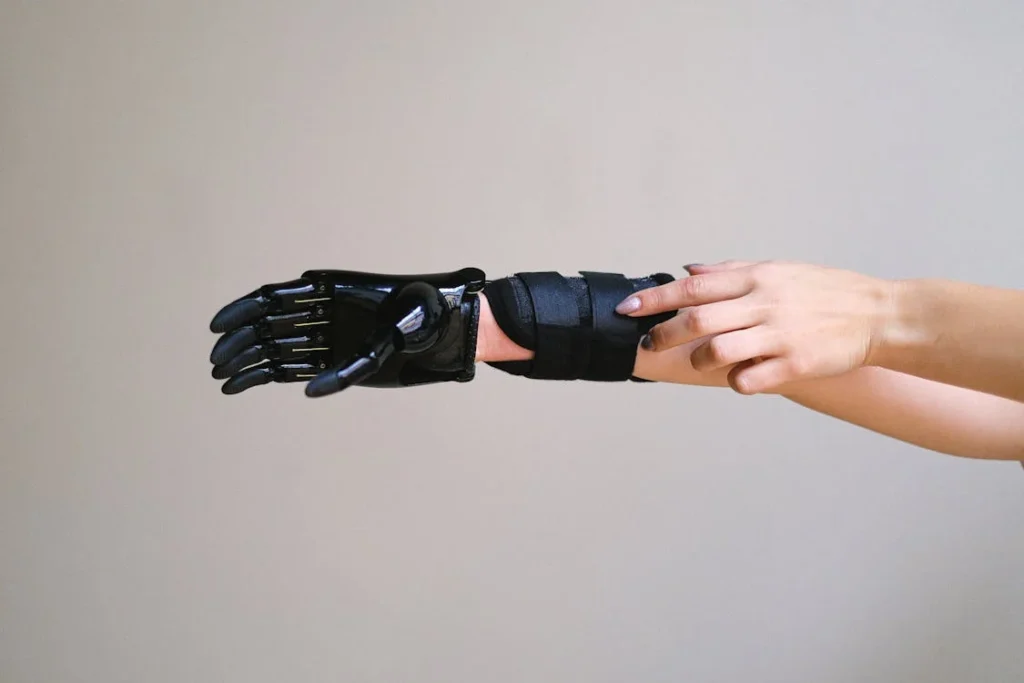
Stories of Change: How Amritsar’s People Are Reclaiming Life with Robobionics
Every Story is Different, But the Outcome is the Same—Independence
Over the last few years, we’ve worked with many individuals in and around Amritsar. What stands out isn’t just the number of people—it’s the variety.
Each person comes with a different story, a different challenge, and a different goal. Some want to return to work. Others want to regain self-sufficiency at home.
Some want to be able to perform religious rituals. And others simply want to stop relying on someone else to button a shirt or pour water.
One of our users, a 22-year-old college student from Majitha Road, lost his hand in a road accident. For months, he stayed indoors, skipped classes, and avoided friends.
He felt embarrassed using a basic prosthetic that couldn’t even hold a pen properly. His confidence hit a low point. When he came to us, he asked just one question: “Will I ever feel normal again?”
Today, that same student is back in college. He takes notes, types on his laptop, eats lunch with friends, and has even joined a study group. He wears his bionic hand with pride. In his own words, “It doesn’t just move with me—it moves me forward.”
Then there’s the story of a retired army veteran living near the Golden Temple who had lost his hand in service. He was known in his community for being active and helpful.
After the injury, he became withdrawn, not because of pain, but because he couldn’t shake hands or serve guests the way he used to.
With his new Robobionics hand, he’s back to attending community meetings, leading prayers, and helping neighbors. He told us, “I may have lost a hand, but I got back my honour.”
These are not isolated stories. These are the outcomes we work for—every single day.
Rejoining Cultural and Religious Life in a City Rooted in Tradition
Amritsar isn’t just a city. It’s a living embodiment of faith, service, and identity. Every alley, every home, every gathering echoes with shared customs.
Here, being able to offer a handful of karah prasad, tie a turban, or serve langar is not just routine—it’s sacred. Losing the ability to perform these gestures can feel like being cut off from community life.
That’s why we made sure our bionic hand supports delicate motions. It can hold prayer items, press palms together in greeting, and grip utensils with precision.
One woman who volunteers at her local gurudwara told us she felt “whole” again the first time she helped in the langar kitchen after her fitting. Another young man proudly showed us how he used the hand to place diyas during Diwali at the temple courtyard.
These are not high-tech achievements. They are emotional ones. And they’re only possible when technology respects culture—not tries to override it.
Function That Feels Effortless
When people first see the bionic hand, their reaction is usually one of curiosity. How does it work? Is it hard to use? How long does it take to learn? The answer always surprises them.
The control is simple. The hand reads signals from the muscles in the remaining part of your arm. These signals are natural—they’re the same ones your brain would send to a real hand. So when you think about moving, the hand moves.
No complicated buttons. No special training needed to begin.
That doesn’t mean there’s no learning curve. There is. But it’s gentle. We start with small tasks like opening and closing the hand. Holding a spoon. Gripping a cup.
Then we guide the user through their daily activities. Tying a knot. Holding currency notes. Using a remote control. Within a few days, many users report that they no longer need to “think” about how to move the hand. It just happens.
This is where true independence begins—not when the device works, but when it becomes part of you.
Built to Last, Built for Amritsar
We know what life looks like in Amritsar. It’s not slow or quiet. It’s full of early mornings, bustling homes, busy roads, and long days. So we made sure our bionic hand fits into this life, not slows it down.
The materials are durable, yet lightweight. The fingers are strong, yet smooth in motion. The entire structure is designed to withstand dust, heat, humidity, and daily use.
The battery lasts through the day and charges easily at home. You don’t need to carry extra parts. You don’t need to worry about wear and tear in a few months.
One auto-rickshaw driver who uses our device summed it up best: “If I can drive, count change, and drink chai by the road with this hand—anyone can use it.”
That’s the standard we hold ourselves to. Not how the device performs in a lab—but how it performs on the streets, at home, in prayer, and at work. That’s where real life happens. And that’s where our technology belongs.
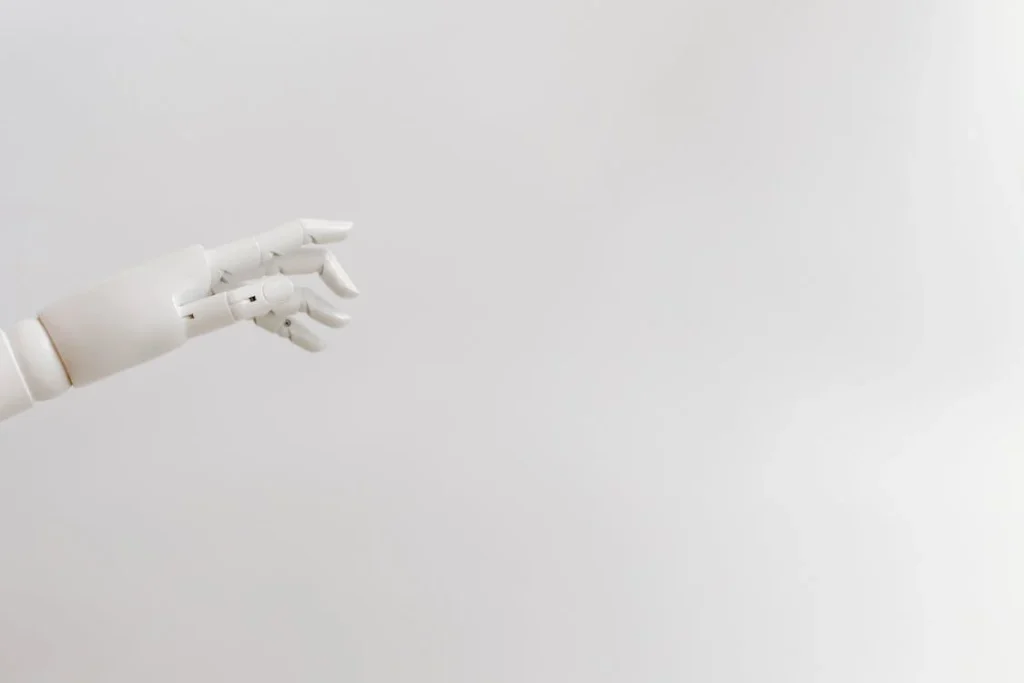
Why Robobionics Stands Out as the #1 Choice in Amritsar
Not Just a Manufacturer—A Partner in Recovery
At Robobionics, we don’t see ourselves as just a manufacturer of prosthetic hands. We see ourselves as partners on a very personal journey—your journey.
From the moment someone in Amritsar contacts us, our goal is to listen first. We don’t start with a sales pitch. We start with a conversation. We ask what daily life looks like, what challenges they face, what they hope to do again, and what’s holding them back.
This understanding helps us deliver something more than a device. It helps us deliver a solution that fits into life in a meaningful way. We don’t want the user to adjust to the hand. We want the hand to adjust to the user.
We’ve helped people in Amritsar from all walks of life—students, labourers, homemakers, shopkeepers, and elders. Each one had different needs, but they all shared the same hope: to live without limitation. That’s the hope we work to fulfill every single day.
A Local Touch That Makes a Big Difference
Being an Indian company based in India gives us an advantage that global brands simply can’t match. We understand local languages, values, and customs. We know how to communicate clearly with users and their families.
We offer instructions in Punjabi, Hindi, and English. We respond quickly when someone needs help. And most importantly, we are available when and where it matters.
For residents in Amritsar, this means no long wait times. No confusing technical jargon. No sending devices abroad for repair. We’ve built support systems in and around Punjab to ensure help is always close.
That matters when someone depends on their hand to function every day. If a small issue arises, it needs to be fixed fast, not weeks later.
Even the way we approach fittings shows this local awareness. In Amritsar, people often come with family members, sometimes even extended relatives.
We welcome them all. We answer everyone’s questions. We allow time and space for decision-making. That kind of respect builds trust, and trust builds results.
Training That Builds Skill and Confidence
Once the bionic hand is fitted, we begin training. But we don’t treat it like a clinic session—we treat it like coaching. Our trainers are not just engineers.
They’re guides who understand both the emotional and physical aspects of using a prosthetic. They work step-by-step, at a pace that suits the user. And they stay available even after the training sessions end.
In Amritsar, we’ve seen many users who felt unsure at first. They wondered if they would ever use the hand naturally. But within days, we see their shoulders relax, their eyes light up. They stop asking “Can I do this?” and start saying “Watch me do this.”
We’ve developed custom modules for different user groups—children, elderly users, working adults, and homemakers. Each module focuses on the tasks that matter most to them.
We don’t believe in generic training. We believe in building confidence by starting with what matters most—success in everyday moments.
The First Step is a Conversation, Not a Commitment
Many people hesitate to reach out because they’re worried about the cost, or whether they’ll even be eligible. We understand that. That’s why we keep the first step simple. It’s just a conversation. No pressure. No forms to fill out. Just a talk—about what you need and what’s possible.
If you’re in Amritsar and wondering whether a bionic hand is right for you or someone in your family, all you have to do is contact us. We’ll take it from there.
We’ll explain how it works, what to expect, and what options are available. If you’re ready to take the next step, we’ll help with everything—measurements, fitting, training, support.
And if finances are a concern, we don’t turn you away. We work with you. We offer flexible payment plans. We connect with NGOs and trusts.
We help you explore every possible avenue to make the device affordable. Because we believe that access to function and dignity shouldn’t depend on your income.
Empowering the Next Generation
We’re also working to build awareness among young people in Amritsar who have lost a limb or were born without one. Many of them grow up thinking their future is already limited.
They drop out of school. They stop pursuing goals. They withdraw from the social experiences that shape confidence and personality.
Our work with teens and young adults is especially close to our hearts. We don’t just give them a device—we give them a way back into education, hobbies, relationships, and ambition.
With a bionic hand, a young person doesn’t have to sit out of a game, skip art class, or hide during group projects. They can participate, contribute, and lead.
One college student we worked with in Amritsar recently told us, “For the first time, I don’t feel different. I feel ready.” That’s the kind of transformation we live for—not just restored movement, but restored momentum in life.
Changing the Way Society Sees Disability
There’s a quiet shift happening in cities like Amritsar. People are starting to view limb loss differently—not as the end of a story, but as the beginning of a new chapter. And that shift is made possible when solutions like ours give people a chance to live fully, freely, and with pride.
We’ve seen parents stop whispering about their child’s condition. We’ve seen shopkeepers proudly display their new hand to customers. We’ve seen elders bless our work not because of how advanced the technology is—but because of how it’s used with care and purpose.
We don’t want our users to hide their hand. We want them to raise it. To wave. To work. To write. To be seen not as someone who lost something—but as someone who took life back into their own hand.
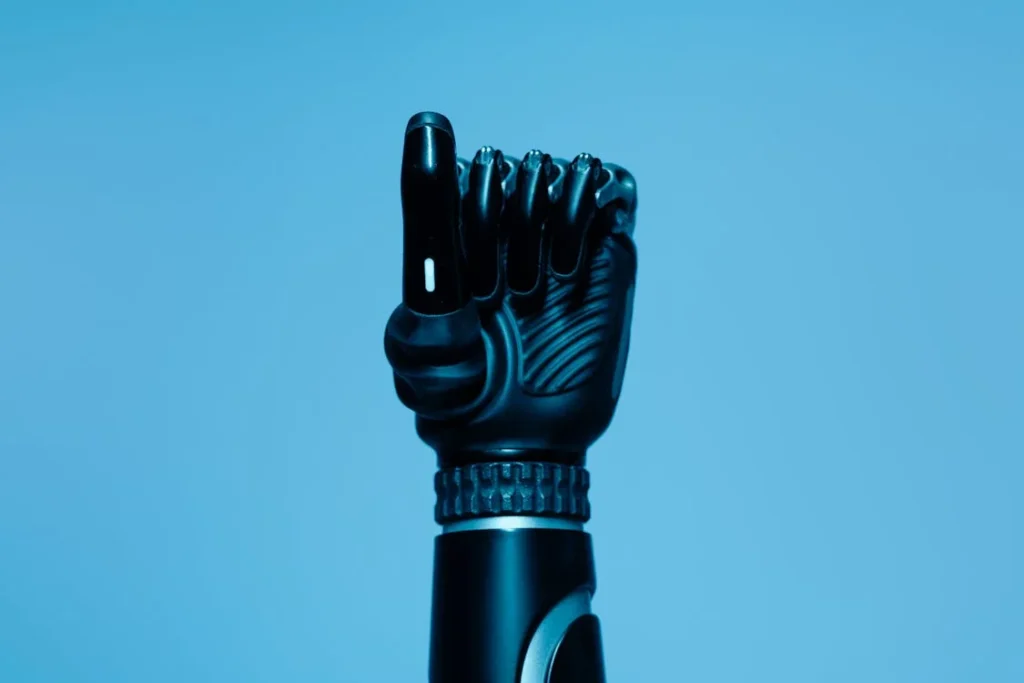
Affordability Without Compromise – Making Bionic Hands Accessible in Amritsar
Why Cost Shouldn’t Stop Progress
One of the biggest fears people have before reaching out to us is cost. It’s understandable. When you hear the words “bionic hand,” you might think it’s something only the very wealthy can afford. But at Robobionics, we’ve made it a point to challenge that idea—and prove it wrong.
We believe that life-changing technology should never be out of reach. That’s why we’ve built our entire system around affordability. We’ve kept development, design, manufacturing, and even support entirely based in India.
This not only reduces production costs but also removes expensive import taxes and shipping delays that are common with foreign-made devices.
When someone in Amritsar comes to us, we don’t just offer them a product—we walk them through every financial option available. For many families, this is a big step, and we respect that.
We break down the price transparently and explain what you’re paying for. There are no hidden charges, no add-ons that appear later. Everything is clear from the start.
We also help connect users with funding support. Whether it’s through private donors, CSR grants, or local NGOs, we leave no stone unturned in finding a way forward.
In fact, a good number of our users in Amritsar received partial or full sponsorships after we helped them access funding options they didn’t even know existed.
We’ve seen time and again that when the will is there, a way can be found. That’s why we encourage families not to decide based on assumptions.
Just have the first conversation. Because once we understand your situation, we’ll do everything we can to make the solution work for you.
No Quality Cuts for Lower Prices
Now, you might wonder—if the device is affordable, does that mean it’s low quality?
Not at all.
In fact, this is one area where Robobionics stands apart. Our engineering and innovation meet international standards.
We use the same advanced myoelectric technology that powers some of the most expensive prosthetics abroad. The only difference is that we’re not importing—we’re innovating right here in India.
That gives us control over the process. It lets us test our designs in Indian conditions—dust, heat, humidity, and long hours of use. We refine based on real feedback from real users, not just lab results.
And we’re constantly improving. Every new version of our hand becomes lighter, more responsive, and even easier to use—without raising the price beyond what our users can manage.
This is the kind of balance we work hard to achieve—cutting cost, not cutting corners.
The Real Value: What a Bionic Hand Restores
The true cost of not having a prosthetic hand isn’t measured in rupees. It’s measured in lost opportunities. Missed jobs. Missed moments. Missed confidence.
When someone can’t return to work, it affects the entire household. When they can’t dress themselves, they lose privacy. When they avoid social gatherings, they lose their community. All of these are invisible costs—and they add up every day.
That’s why investing in a bionic hand is more than just buying a medical device. It’s giving someone back their ability to earn, to help, to live without constant help.
It’s restoring balance in a home where one person had to carry the load for two. It’s giving a young student the freedom to sit in a classroom without feeling “different.”
One father in Amritsar who received a Robobionics hand told us something we’ll never forget: “I didn’t just buy this for myself. I bought it for my children—so they can see me stand tall again.”
That’s the value that truly matters.
A Journey We Take Together
From the first conversation to the day someone lifts a cup of tea confidently with their new hand, we stay by their side. We offer not just technical help, but emotional support.
When someone struggles, we don’t just give answers—we give time. We listen, we adjust, and we encourage.
This level of care is something we’ve built intentionally into our process. We don’t believe in quick fixes. We believe in lasting change.
That’s why our users in Amritsar often stay connected with us long after the initial training is done. They send us updates. They share milestones. They refer others who are still unsure.
Some even become local advocates, telling their story so that others can see what’s possible.
One such advocate is a young woman from Amritsar who works at a tailoring center. After losing her hand in an accident, she thought her career was over.
After receiving her bionic hand and completing training, she returned to work—faster than anyone expected. Today, she mentors others who are considering Robobionics. She tells them the truth—not just that it works, but that it’s worth it.
That kind of trust is something we earn one person at a time.
A Community That’s Growing Together
Every city has its heroes. In Amritsar, we’ve met many of them. They are not celebrities. They are everyday people who kept going even when life threw them off track.
And when they found Robobionics, they found more than a product. They found a way to keep walking, working, and living on their terms.
This growing community is a source of pride for us. We don’t just count users—we build relationships. We celebrate their victories. We learn from their challenges. And we use their stories to make our technology better for the next person.
Because in the end, our goal is simple: to help people live with strength, purpose, and dignity.
And we believe the people of Amritsar deserve nothing less.

Breaking Barriers in Amritsar – How Robobionics Is Shaping a More Inclusive Future
Changing Public Perception Around Limb Difference
In a culturally rich and community-driven city like Amritsar, appearances and social impressions carry significant weight. When someone loses a hand, it’s not just their personal routine that changes—how others perceive and treat them can change too.
Sadly, many people who’ve experienced limb loss report being seen as fragile, incapable, or “different.” And this often leads them to withdraw from everyday life, not out of physical limitation, but out of discomfort.
At Robobionics, we know that stigma can be just as limiting as the physical condition. That’s why part of our work goes beyond the device itself. We’re here to help shift public perception—from sympathy to strength, from doubt to confidence.
When people in Amritsar start seeing their neighbors, friends, or family members wearing a bionic hand and returning to daily life with energy and capability, the narrative starts to shift.
The device stops being a symbol of loss and becomes a symbol of resilience. We’ve had users tell us their neighbors stopped staring and started asking questions—not out of pity, but out of curiosity and admiration.
This change doesn’t happen overnight. But every time someone confidently walks into a gurudwara, takes public transport, or stands behind a shop counter with a bionic hand, they’re not just rebuilding their life—they’re rebuilding awareness in their community.
Supporting Women and Girls in Ways That Truly Matter
In many homes in Amritsar, especially in joint families, women often manage the rhythm of the house. They cook, clean, care for children, manage budgets, and take care of elders.
So when a woman experiences limb loss, it deeply disrupts the home, not just practically but emotionally. We’ve seen women go silent after such incidents, not because they lacked courage, but because they felt sidelined in their own families.
For these women, regaining hand function is about far more than tasks—it’s about returning to their rightful place.
Our bionic hand has helped women in Amritsar resume everything from making chapatis to braiding their daughter’s hair.
One user, a mother of three, told us that being able to pack lunchboxes again for her children brought tears to her eyes. She didn’t miss the convenience. She missed the connection.
Another user, a young bride, was able to confidently take part in her own wedding rituals after receiving the hand just weeks before the event.
She stood in front of hundreds, greeted guests, lit the ceremonial fire, and wore her bangles with pride. That memory will never fade—for her, or for us.
These moments matter deeply, and they’re a reminder that technology must serve culture, not replace it.
Helping Children Reclaim Joy and Normalcy
Few things are harder to watch than a child pulling their hand away when someone asks, “What happened to you?” In schools, parks, and playgrounds, children with limb differences often feel left out—not just from physical activities, but from the flow of friendship.
Other kids may not know how to respond. Teachers may not know how to help. And slowly, the child begins to withdraw.
At Robobionics, we’ve worked with many children and teenagers across India, including right here in Amritsar. We don’t just fit them with a smaller version of our device—we provide a full support system.
We talk to parents, teachers, and even classmates when needed. We show everyone that the bionic hand is not a disability—it’s a superpower.
We’ve seen shy, quiet kids turn into confident, outgoing students after getting their bionic hand. They start raising their hand in class again. They play more. They stop hiding. They start participating in art class, tech clubs, and even sports.
And the best part? The bionic hand becomes something to show off. It becomes a talking point—not something to hide, but something to celebrate.
A Quiet Revolution in Small Towns Around Amritsar
While our primary outreach is in cities, we’ve also been working with nearby towns and villages around Amritsar.
Places like Tarn Taran, Ajnala, and Batala have many people who don’t know such technology even exists—because they’ve never seen it, or because they assume it’s only available in metro cities.
We’ve been actively changing that by conducting awareness camps, collaborating with local clinics, and building partnerships with rural health workers.
When someone from a village sees a neighbor using a bionic hand confidently, it changes what they believe is possible for themselves.
We remember one farmer who traveled three hours to attend a demo in Amritsar. He didn’t speak much during the session. He just watched, tried the hand quietly, and went home.
A week later, he returned with his entire family—and a smile we’ll never forget. He’s now back in his fields, managing his work with the same pride he had before the accident.
Technology alone can’t change a life. But technology in the hands of someone determined—that’s a different story.
What Comes After the Hand: A Vision for the Future
Robobionics isn’t just here for today—we’re building for tomorrow. In Amritsar and across India, we’re working on new innovations that will offer even more mobility, better adaptability, and smarter feedback for users. But more importantly, we’re building communities around our technology.
We want users to meet each other, to support each other, and to share stories that uplift. We’re already seeing that happen in Punjab, where Robobionics users reach out to guide new patients, answer questions, and help with training.
Our dream is simple: to normalize the bionic hand, not as a medical device, but as a lifestyle choice. Just like people wear glasses, braces, or hearing aids, we want the Robobionics hand to be seen as a tool for a better life—not a mark of injury, but of empowerment.
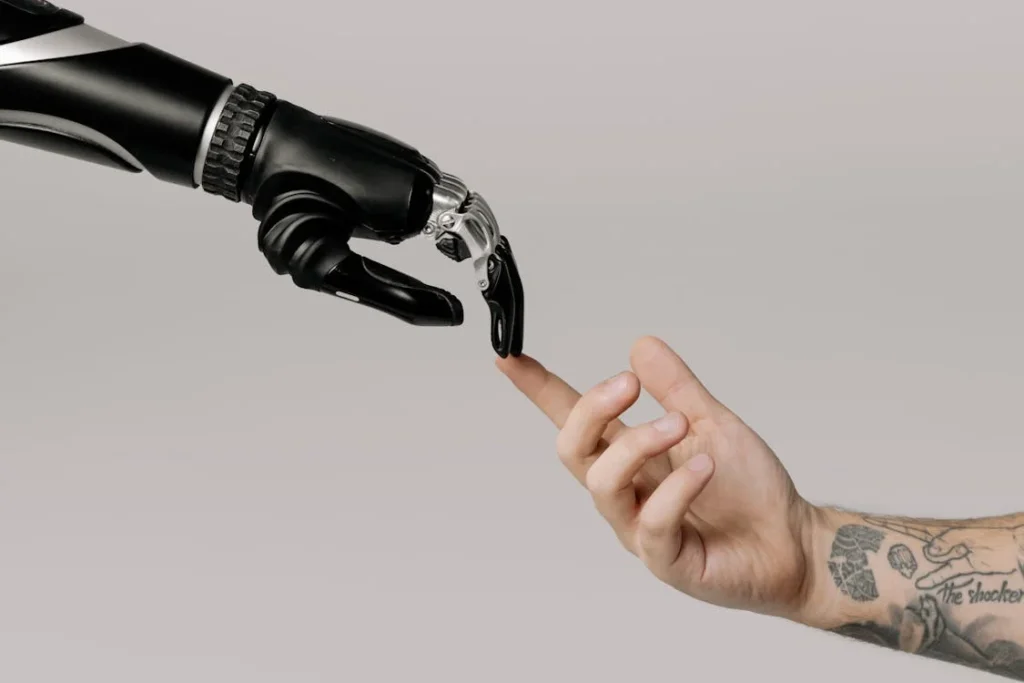
Conclusion
In a city known for its spirit, devotion, and resilience, every person in Amritsar deserves a chance to live fully, without barriers. Losing a hand should never mean losing your independence, your dignity, or your role in your family and community. At Robobionics, we’ve made it our mission to restore those things—not through promises, but through powerful, practical technology that works for real people, in real life.
Whether you’re a mother cooking for your family, a father returning to work, a student chasing dreams, or an elder taking part in daily rituals—we are here to help you take back control. Our bionic hand is more than a device. It’s a second chance. It’s a quiet partner in your recovery. It’s your hand—rebuilt, reimagined, and ready to move.
We understand Amritsar’s culture, values, and way of life. That’s why we’ve created a solution that doesn’t just work, but fits in. If you or someone you love is ready to take that first step, Robobionics is ready to walk with you. Let’s bring motion, confidence, and hope back into your hands—starting today. Reach out. Try. And experience the freedom to live on your terms.



